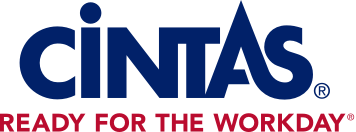One Simple Piece of PPE Protects from Vapors, Mists, Virus, and More
Personal protective equipment (PPE) has come a long way since the early days of a simple hard hat and a pair of gloves. That’s great news for the millions of people whose health and safety rely on high-tech, head-to-toe options for PPE. From safety vests to eye protection to advanced cut-resistant gloves, there are PPE options designed to put safety first across hundreds of jobs in dozens of industries, from healthcare to construction to culinary arts, and so much more.
There’s one piece of PPE in particular that is highly effective in its ability to do its job: the respirator. Though respirators are available in a variety of function-specific designs, they all start with covering the user’s nose and mouth to protect them from airborne hazards. According to the Occupational Health and Safety Administration (OSHA), millions of workers are required to wear respirators in various workplaces throughout the United States.
In fact, OSHA says, “Compliance with the OSHA Respiratory Protection Standard could avert hundreds of deaths and thousands of illnesses annually.” That’s because respirators protect workers against a host of issues: insufficient oxygen environments, harmful dusts, fogs, smokes, mists, gases, vapors and sprays. Those hazards, according to OSHA, may cause cancer, lung impairment, diseases or death.
Respirators are highly technical pieces of equipment, and lots of options are available to serve specific job functions. Are your teams using the right respirators?
The Importance of Respirators
Having the right respirators on hand for your team is important for both protection and compliance. Respirators protect the user in two basic ways: by removing contaminants from the air, and by supplying clean, respirable air. Available in both disposable and reusable, there are many versatile options to choose from.
The Centers for Disease Control (CDC) writes, “While all masks and respirators provide some level of protection, properly fitting respirators provide the highest level of protection. Wearing a highly protective mask or respirator may be most important for certain higher risk situations, or by some people at increased risk for severe disease.”
Selecting a Respirator
There are lots of factors that go into selecting the right respirator: the anticipated hazards, the job function, the level of protection needed and so on. Here are considerations to keep in mind to help match the respirator to the job.
Full or partial face covering. Reusable respirators remove vapors, gases and particulates from the air using replaceable cartridges, filters or a combination of both. They’re available in full-face or half-face models and come in a variety of sizes to fit most users.
Maintenance. Many of today’s reusable respirators are designed with reliability and quality in mind. Features can include versatile replacement parts that can be used for multiple respirators; smaller number of parts for easier maintenance; and even face shield covers to protect from scratches and dust. In some respirators, components can be replaced by hand in seconds.
Comfort: disposable respirators. Disposable respirators include N95s, and they’re now available with a host of features to help make them more comfortable for the user. Those features can include:
- Adjustable nose clips that easily adjust for fewer pressure points
- Exhalation valve to help reduce heat build-up inside the respirator
- Compatibility with protective eyewear and hearing protection
- Lightweight construction that can promote greater user acceptance and may help increase wear time
- Cushioning nose foam
Comfort: reusable respirators. Reusable respirators, too, include more features to help promote comfort so your team can focus on the job. Those features may include:
- Reduced pressure points around the sealing surface
- Added stability so the face-piece won’t collapse
- More lightweight, softer, more pliable construction
- Design that promotes easy on-and-off and integration with other PPE
- Anti-fog coated lens
Ease of use. Respirators are more likely to be used if they’re easy and hassle-free. Look for features like quick-release buckles, extended field of vision, and even optional prescription lens inserts that promote ease of use.
To find out more about respirator options and how they can benefit your business, contact Cintas First Aid & Safety today.
